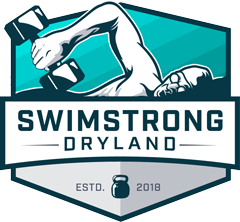Muscle Soreness and Recovery
My guess is that, as an athlete, you have probably heard someone say: “I’m so sore! That workout was brutal!” Inevitably if you are an athlete who is accustomed to working hard, or an athlete who has just started a new program, you are going to experience some level of Delayed Onset Muscle Soreness (DOMS). This is muscle soreness that is experienced post-exercise, sometimes within hours, but usually peaking around the 2-day mark. There are many possible causes, but to put it simply, this soreness results from small, microscopic tears in the connective tissue. This is normal. However, to get the most out of your workout program, focusing on the recovery process is essential.
**Side note before I continue** — If you are an athlete and spend time around others who love fitness, you have probably also heard someone bragging about how sore they are and how it must mean they got a great workout in. Let me just tell you point blank, this is faulty logic. There is no evidence that the degree of muscle soreness is an indicator of an effective workout. As a matter of fact, depending on the damage done to your muscles, it may actually be detrimental to your results if it prevents you from completing the next part of your program. If you are unable to perform in your next workout, the benefits can be hindered or lost completely. And on top of that, it is important to understand the mental toll certain workouts may have. If someone is constantly getting beat down with no purpose to the programming, there’s a risk of losing motivation and burning out. This is why it is so important to have a periodized, professionally designed program that takes into account both the physiological and psychological processes. You should never just wing a workout program and think that consistently hard workouts will equal success in the pool.
All that being said, it is normal to experience muscle soreness, and it can certainly be a good thing. Athletes who are new to resistance training will experience the most soreness, especially during the first month as their body adjusts to the new demands. With this in mind, the programming should slowly introduce new movements and very gradually increase the resistance/intensity to allow the body to adapt. As you adapt, the well-informed fitness professional should be introducing new stimuli to see continual progress. That means there will be many days where you experience some degree of soreness.
BUT, it is essential to maximally recover, so that your mind and body are fully prepared for the next workout. You have the ability to treat your body well, and help with its restoration. So make the decision to do so! Some simple ways to do this:
- Active Recovery – Not moving is the biggest mistake people make when they are sore. Steady state cardio, dynamic warmups, and long cool-downs are all a great idea to keep moving and promote recovery.
- Drink water – Hydration will help remove toxins and keep the body functioning at a high level.
- Get enough protein – Protein and amino acids will help repair/rebuild your muscle fibers. If you don’t make this a focus, your recovery process can be much slower.
- Foam Rolling – Self-myofascial release has been shown in numerous studies to decrease DOMS when performed after strenuous exercise, thus helping the next performance.
- Sleep – This is natural medicine to your body and one of the most powerful ways to recover. Get at least 7-9 hours for maximal benefits. Sleep deprivation can lead to all kinds of negative results such as reduced muscle glycogen repletion and poor cognitive function.

